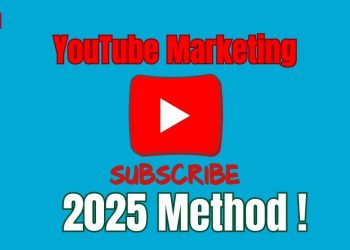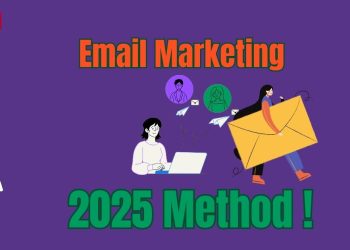The work done inside a website while doing search engine optimization is called on page SEO. On page plays a huge role in search engine optimization. Through which you can bring targeted audiences to your website.
You will get a complete guide of On Page SEO 2025 from this article.
What is On Page SEO 2025 ?
On page SEO is the optimization of Refers to the process of optimising a website’s internal components such as content, metadata, and code so that it ranks on the first page of search engine results (SERP).
Simply put, the main purpose of “On Page SEO” is to help Google and other search engines understand your content better.
What we will learn in this article~!
- Basic concepts of on-page SEO
- Why is it necessary?
- How to do OnPage SEO
- What are Google Ranking Factors for On Page?
- Difference between On Page and Off Page and Technical SEO
Why On Page SEO?
You might be thinking that there are many different types of SEO.
So why do we give more importance to on-page SEO? – So if you have such a question in your mind then I will say, SEO is never complete without pages.
Because, to do the SEO of a website, you have to pay attention to various things.
For example, content optimization, keyword research, title optimization, keyword density, etc., are included in On Page SEO.
Now if you don’t pay attention to these things no matter how much other things you do in SEO. However, apart from these, a total of 03 things need to be emphasised for On Page SEO. For example
Benefits of On-Page SEO
(1)~Providing information about the website to search engines.
- The easier you can explain your website to search engines when doing SEO, the faster the website will rank.
- Because when a new website is created, the Google crawler gives importance to different aspects of your website.
- And the most important things that Google crawls after coming to the website to understand the website are basically those included in on-page SEO.
- And when Google crawler understands your website, it will start ranking that website.
(2) ~ Assisted visitor optimization.
- On-page SEO is done not only by targeting the search engines but also by keeping the visitors in mind.
- Because, after the visitor comes to the website from the search engine, you need to adopt several strategies to keep him on your website.
- And these techniques can be applied only when you do On Page SEO.
(3)~Increase in website traffic.
- Where visitors are attracted to click on your website link from search results by following some strategy.
- Then various techniques are applied to keep him on your content.
- So in the above discussion you can see 03 reasons.
- Mainly for these reasons on page SEO is needed. And these 03 things are most important for those of you who work with websites.
How To Do On-Page SEO (Guide 2025 Procedures)
- Important aspects of SEO for a website are discussed in detail below. Things you need to focus on while doing on-page SEO of a website are~!
- Important aspects of SEO of a website are discussed in detail below. Things you need to focus on while doing on-page SEO of a website are~!
- There is a saying in English ‘Content is king’. This saying is an unwritten truth in the content marketing or SEO sector. SEO requires content.
- Just as branded sports are worthless without an engine, content is worthless without SEO. Although it is useful in some cases, a content without SEO will not last long.
So let’s dive into the important content points of On Page SEO-
(1)~Keyword research and its use~!
- The main way to fulfil or solve the search objectives of readers through a website is to write articles based on the keywords they type in to search.
- There is no substitute for keyword optimization to reach readers of a webpage through Google search.
- Keyword research and optimization is quite difficult in many cases.
- Suppose you write content about furniture.
What would a reader look for on that website?
- Various furniture including sofa, chair, dining table.
- So if you use these words as keywords, it will help your content to reach its target customers very easily.
- Besides, the visitor can know and understand different types of unknown information.
Tips for using keywords~!
- Search engine optimization requires using keywords in content.
- You can use keywords in the title, H1, body content and any article title.
- Also, keywords can be used in image alt tags and URLs.
- However, keywords cannot be used repeatedly or keyword stuffing.
- In this case you can use related keywords and synonyms. Optimising the page in the manner described will result in higher keyword rankings.
- Because, the depth of your content will increase and overuse of keywords will be avoided.
(2) ~SEO Friendly Article Writing~!
- SEO is the art of preparing content and posting it on your website with the needs of searchers in mind.
- There is a saying in English ‘Content is King.
- This is an unwritten truth in the content marketing or SEO sector.
- Worthless, optimised content is worthless without a branded sports engine.
- While this is useful in some cases, an article without on-page optimization is unlikely to reach many people.
- So let’s talk about the important aspects of Onsite SEO.
Now, let’s learn about some important ways to give search engines an accurate idea of your content~!
Ensure readability~!
- SEO content basically refers to human and search engine friendly content.
- Let’s say you’ve written a blog post but it doesn’t make sense to readers.
- So why should readers read your blog articles?
- There are many articles available online on the same topic, so you need to focus on how readable or easy to understand the text is for the readers.
Don’t overuse keywords~!
- Never overuse keywords.
- This is as bad as it gets for websites for SERP rankings.
- As the reader loses interest after reading your writing.
- Again, the Google Panda algorithm gives a penalty if this keyword is used excessively and abnormally.
Make the article meaningful by using subheadings~!
- Text below the main heading or headings in a larger font than the main heading are called sub-headings.
- These headings are used to divide a large body of content into steps. H2, H3, H4, H5, H6 tags of HTML can be used as sub-headings.
- A content sub-heading is very attractive to readers.
- All the information in the content can be summarized in a short form by means of sub-headings.
- Create sub-headings in such a way that your audience has a complete idea of exactly what you are writing about.
- It helps to retain traffic or increase page time.
- We can use keywords in this subheading to do page SEO.
- SEO-optimised posts should use main keywords in their titles (H1 title tags).
- And if the length of the content is big, you can use keywords in H2 heading and then in H3 heading.
Elaborate the article with short paragraphs~!
- Remember to structure short sentences or paragraphs to make a content readable.
- If you publish your content on a website in long paragraphs or sentences, readers will lose interest in reading your content.
- Which will become quite a concern for your site as well as you as a blogger.
Use numbers or bulleted lists~!
- Although it may seem meta, you should use bulleted lists to make your content informative.
- If you present the difficult aspects of the content in bullet form, it will be interesting to the readers and they will read the content with great interest.
- Will be visiting your site as well.
SEO is the art of preparing content and posting it on your website with the needs of searchers in mind.
If you have no previous experience in this job then this job is quite challenging for you.
But if you learn SEO and create your content through it, it will become very easy for you.
Meta description (meta description) optimization
- A summary of a webpage’s content for search engine users is called a meta description.
- A visitor can read the meta description to understand if your article is suitable for them.
- Add a meta description using your favourite SEO plugin. Make sure it is no more than 160 words and include keywords.
- Despite the relative lack of SEO on any webpage, it provides them with two benefits-
- Knowing exactly what information is provided on your webpage helps readers understand exactly what visitors are suited for.
- However, meta description is not a ranking factor. However, since Google shows it in SERPs in many cases, it helps to increase the click through rate.
(4) ~ page load speed (page speed) optimization
- Just as a website can get customers to know about your content, your business, a website can also make you lose customers. This may sound surprising but it is absolutely correct.
- Because if your website speed is slow then a customer will never buy from your page. Thus, you will gradually lose your target customers over time.
- The more your website loads, the more it will be accepted by your target customers and will play an important role in developing your SEO ranking.
- A lot determines exactly how long your website takes to load. Basically a website is enough to do well in Google’s core web vitals.
- Check PageSpeed Insights to check your site speed.
Mobile friendly design
- Due to the significant increase in the number of mobile users, Google is giving importance to search engine optimization according to the convenience of mobile users.
- So Google’s technical team is giving importance to search engine development based on mobile user interface.
- You can check if your site is responsive and mobile friendly by using Google Search Console and Mobile Friendly Test.























